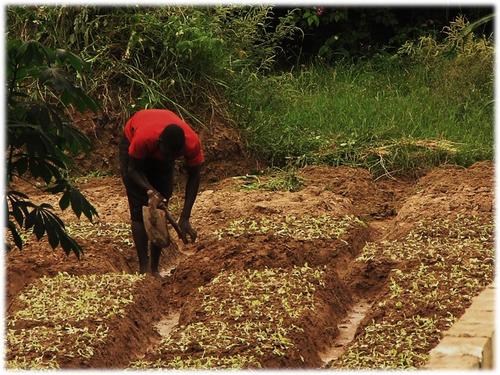Small earth ridges, with furrows between them, blocked with earth ties every 0.5 – 1.0 m are termed ‘tied ridges’. On gentle slopes typical dimensions of the ridges are 20 – 25 cm height and 0.5 – 1.5 m spacing between ridges depending on rainfall and the crop to be grown. On flat land compacted bunds and ridges are constructed to generate runoff with a spacing of 1.2 to 10 m and a ridge height of 30 – 100 cm, depending on rainfall, crop to be grown and soil characteristics. Runoff is collected between the ridges. The catchment to application area ratio (C:A) ranges from 1:1 to 5:1. This type of ridge needs maintenance every cropping season and has to be rebuilt about every 5-6 seasons. Tied ridges are often considered an in situ form of water conservation, though where the ridges are large it can be argued that they act themselves as a form of microcatchment. (Mekdaschi & Liniger 2013)
